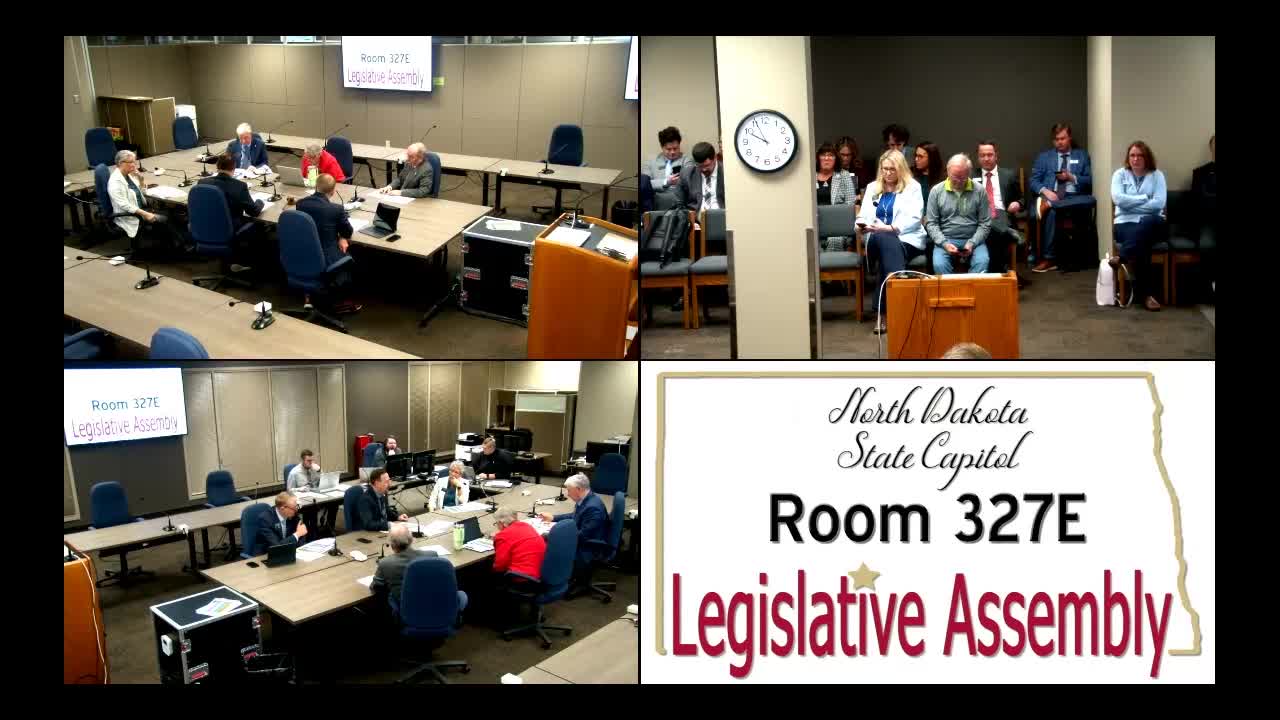Senate bill proposes new speeding fines structure in residential areas
April 28, 2025 | House of Representatives, Legislative, North Dakota
This article was created by AI summarizing key points discussed. AI makes mistakes, so for full details and context, please refer to the video of the full meeting. Please report any errors so we can fix them. Report an error »

In a recent meeting of the North Dakota Legislature's Conference Committee on HB 1298, lawmakers engaged in a detailed discussion regarding proposed changes to speeding fines and penalties, particularly in residential and school zones. The committee examined the implications of introducing additional fees for speeding violations, especially in areas with lower speed limits, which are often seen as higher risk zones.
One of the key points raised was the potential for fines to increase significantly for drivers exceeding the speed limit in school zones. For instance, a driver caught going 10 miles per hour over the limit could face a ticket totaling $85, combining a base fine with an additional fee specifically for school zones. This approach aims to enhance safety in areas frequented by children and pedestrians.
Senator Hogan highlighted the need for clarity in defining what constitutes a "residential area," as the bill proposes a $25 additional fee for speeding in such zones. The discussion revealed concerns about the ambiguity of this definition, particularly in urban areas like Fargo, where the distinction between residential and commercial zones can be unclear. Lawmakers acknowledged that the language in the bill could benefit from refinement to ensure consistent enforcement.
The committee also touched on the broader implications of the proposed changes, noting that the focus on low-speed limit areas reflects a growing recognition of the risks associated with speeding in these environments. The conversation included considerations for adjusting penalties for distracted driving, particularly for drivers under 18, although some proposals, such as increasing points for distracted driving violations, were not included in the current draft.
As the committee continues to refine the bill, the discussions underscore a commitment to enhancing public safety while navigating the complexities of traffic regulation. The anticipated next steps will involve further amendments to clarify definitions and ensure that the proposed penalties effectively address the safety concerns of North Dakota communities.
One of the key points raised was the potential for fines to increase significantly for drivers exceeding the speed limit in school zones. For instance, a driver caught going 10 miles per hour over the limit could face a ticket totaling $85, combining a base fine with an additional fee specifically for school zones. This approach aims to enhance safety in areas frequented by children and pedestrians.
Senator Hogan highlighted the need for clarity in defining what constitutes a "residential area," as the bill proposes a $25 additional fee for speeding in such zones. The discussion revealed concerns about the ambiguity of this definition, particularly in urban areas like Fargo, where the distinction between residential and commercial zones can be unclear. Lawmakers acknowledged that the language in the bill could benefit from refinement to ensure consistent enforcement.
The committee also touched on the broader implications of the proposed changes, noting that the focus on low-speed limit areas reflects a growing recognition of the risks associated with speeding in these environments. The conversation included considerations for adjusting penalties for distracted driving, particularly for drivers under 18, although some proposals, such as increasing points for distracted driving violations, were not included in the current draft.
As the committee continues to refine the bill, the discussions underscore a commitment to enhancing public safety while navigating the complexities of traffic regulation. The anticipated next steps will involve further amendments to clarify definitions and ensure that the proposed penalties effectively address the safety concerns of North Dakota communities.
View full meeting
This article is based on a recent meeting—watch the full video and explore the complete transcript for deeper insights into the discussion.
View full meeting
